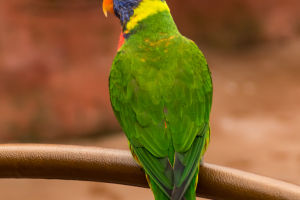The crane is a beloved symbol in Chinese culture, representing elegance, good fortune, fidelity, and longevity. It has been featured in ancient poetry, paintings, and other works of art.
Due to its rarity, the crane is highly sensitive to changes in its wetland environment and is often referred to as the "God of Wetlands."
The crane is a large bird, measuring between 1.2 to 1.5 meters in length. Males are slightly larger than females, and both sexes have a broad gray-black stripe on each side of the neck, a small white spot on their ear feathers, and a dark brown iris.
The crane's forehead and the top of its head are bare and vermilion, while its throat and neck are black. The secondary and tertiary flight feathers are also black, and the beak is yellowish-green.
The crane's tail is short with white feathers, and its legs and feet are leaden black. Young cranes have a pale tawny color, with black tips on their primary flight feathers and dark brown or gray secondary flight feathers and neck.
During the breeding season, cranes roost in reed swamps, mossy lowland marshes, and marshy meadows with year-round water accumulation. They typically nest in reed swamps. In the winter season, cranes can be found in mudflats, rice fields, and reed swamps. Their diet is varied and includes insects, fish, shrimp, crabs, shellfish, snails, and agricultural seeds and seedlings.
In late February and early March, wild cranes migrate from their wintering grounds to their breeding grounds. In early October, they leave their breeding grounds in small groups and move to their wintering grounds.
During migration season and winter, cranes often assemble in larger groups, with family groups still visible within them. They roost in the shallows around water or along the reeds at night, often in family groups.
The cranes' call is loud and clear, used as a signal of territoriality and communication during courtship. When flying, cranes often form a single or V-shaped line, with their heads and feet straight back and forth as their wings slowly drum.
Breeding season for cranes is from April to June, with a male and female pair system. The males and females announce their possession of the nest domain by constantly calling to each other. Generally, two eggs are laid per clutch, occasionally only one.
The eggs are oval, with a pale gray or black and white color and rusty brown or purplish-gray spots on the blunt end. The incubation period is 30 to 33 days.
At the end of the breeding season, chicks are capable of flight and migrate with their parents to their wintering grounds. Sub-adult cranes usually reach sexual maturity in two years and can live up to 50-60 years.
The crane is a treasured symbol in Chinese culture and an important species in wetland environments. Its sensitivity to changes in its habitat serves as a reminder of the fragility of our environment and the importance of protecting it.
Protecting wetlands is not only protecting the home of the cranes but also caring for our planet.


